The Art of Disguise: Cindy Sherman’s Fabric
Dressing up is at the core of American photographer Cindy Sherman’s art, and it’s a passion that has fuelled her career for more than fifty years. Taking her own body as a starting point, Sherman has dressed up in a whole range of fantastical disguises, from old Hollywood starlets to terrifying clowns and fraudulent fortune tellers. Her photographs lean into the ludicrous and even terrifying, a stark reminder of the ridiculous artifice that colours so much of the way we are pressured to present ourselves in contemporary life. Fabric is a central tenet in her acts of transformation, allowing her to disappear behind elaborate costumes and render herself entirely unrecognisable. She once even commented, “I’m trying to erase myself.”
Born in New Jersey in 1954, Sherman came of age in late 1970s New York. It was during this time that she emerged as a leading figure in the Pictures Generation alongside artists including Barbara Kruger and Richard Prince, a pioneering group who responded to rising mass media and advertising with a biting, satirical edge. Sherman’s first breakthrough from 1977-80 was the series of 69 black and white photographs Untitled Film Stills, in which the artist dressed up as a series of fictional, stereotypical female tropes that perpetuated Hollywood B movies, Film Noir, and European art-house films. Among the various characters, she adopted were the lonely housewife, the ingenue, the vamp and the working girl. This series was the first in which Sherman began exploring a feminist questioning of conventional female narratives.
Dressing up in the clothing of these characters also allowed Sherman to interrogate what their style meant, and she became particularly interested in conveying a strange dissonance between the external image and the internal minds of these female characters. She noted, “They were women struggling with something, but I didn’t know what. The clothes make them seem a certain way, but then, you look at their expression, however slight it may be, and wonder if maybe ‘they’ are not what the clothes are communicating.”
Throughout the 1980s Sherman began working with colour photography, and soon found it allowed her to expand the types of fabric, clothing and makeup she could experiment with. In one particular series titled History Portraits, 1988-1990, Sherman makes a pastiche of Old Master paintings, mimicking the indulgent drapery, silky surfaces and elaborate patterns that filled history paintings and aided in their storytelling. But Sherman’s versions are a deliberate knock-off, made using junk-shop props and thrift-store fabrics. In doing so she playfully riffs the art historical tropes of the past, while also pointing out the artifice and staging that so often went on in the making of the great masterpieces that are so revered and adored.
In one work from this series, Untitled #228, Sherman is posed as the popular Biblical heroine Judith, holding the severed head of Holofernes. At first glance, Sherman’s filtered photographic lens suggests the sumptuous silk and embroidered tapestries of the Renaissance, but looking closer, the fabrics draped over and around her are clearly cheap throwaways. Sherman said, “I would go to a Salvation Army and look for certain kinds of costume-y things. But so much of it was junky stuff.” The strange, cheap quality of the fabric gives the image a discomforting unease, a quality that is emphasised by Sherman-as-Judith’s haunting, glazed expression.
More recently, Sherman has ramped up these sensations of discomfort by playing with intensely coloured fabrics along with exaggerated make-up and prosthetics. In Untitled (Fortune Teller), 1993, Sherman becomes a mystical clairvoyant, eyes ablaze as she leans over her crystal ball. But the orange turban wrapped around her head is thin and flimsy, suggesting she is in fact a fraud. Sherman’s ongoing series of clowns are even more garish and creepy, but her costumes and fabrics are luxe and flamboyant, highlighting the clown as a figure of hedonistic excess and malevolence. It is telling that Sherman first conceived of her clowns after being asked to guest edit the fashion section of British Vogue Magazine – this may in part explain this shift in fabric choice.
In another ongoing group of photographs, Sherman is styled like ageing grand dames of 1920s Hollywood. Much like her clowns, these older women are dressed in rich velvets, silks and embroidered garments that suggest lives of pampered luxury and old-fashioned decadence. Through these garments, coupled with wigs and make-up, Sherman is able to transcend normal life, just for a moment, and become someone entirely new, with their own complex internal narrative. Sherman has observed how liberating this experience is, noting, “There have been times when I have just caught a glimpse of a reflection and thought: that is not me. That is somebody else. I love it when that happens. I am star-struck that this apparition has been created.”





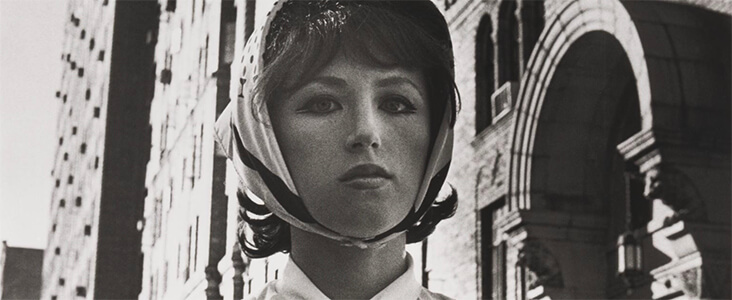
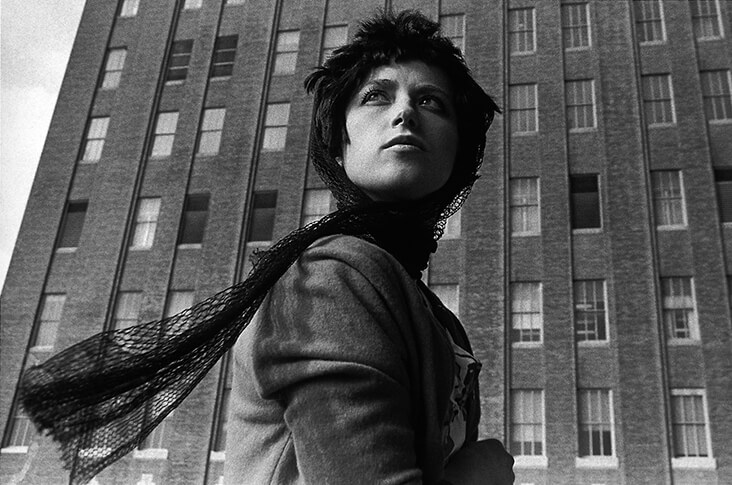
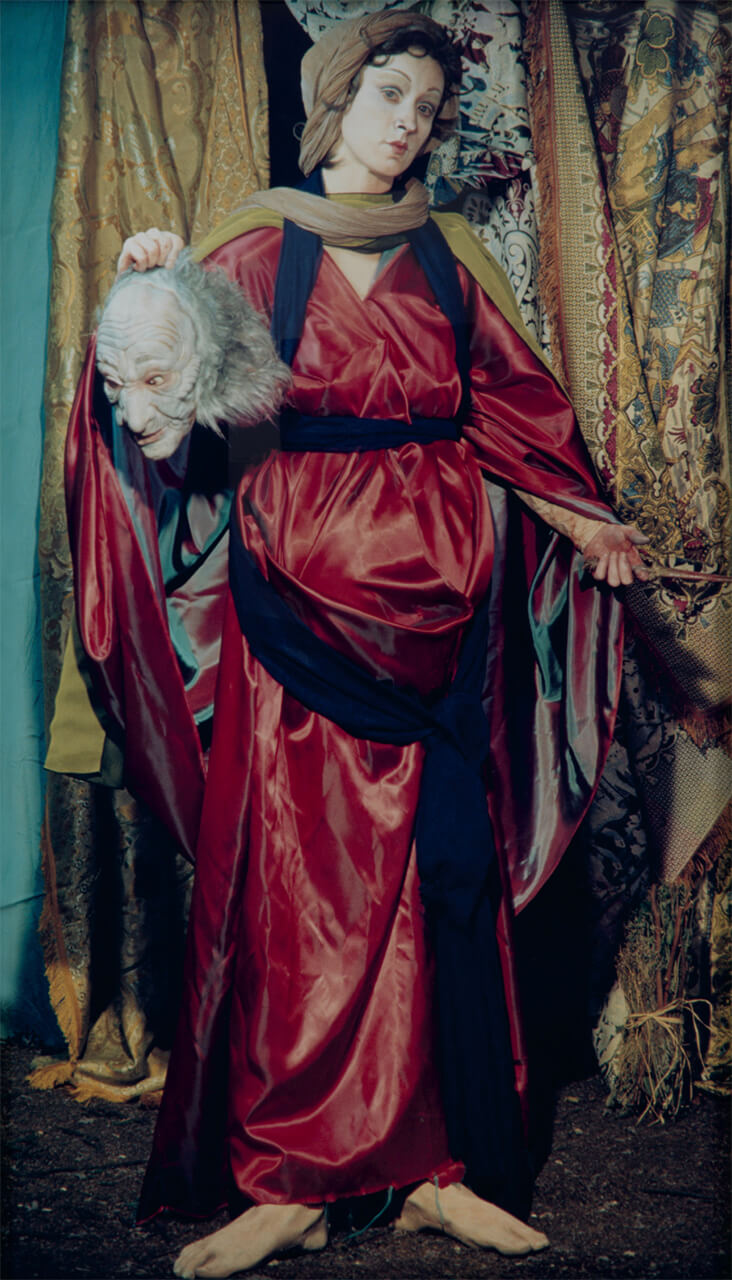
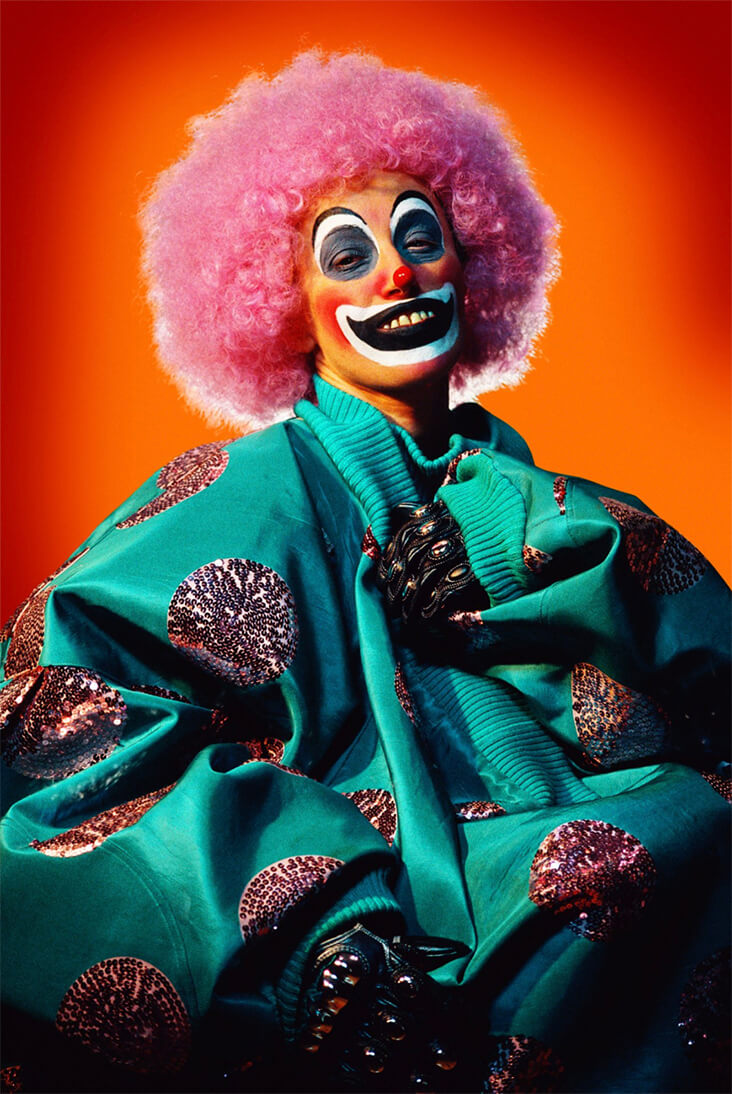
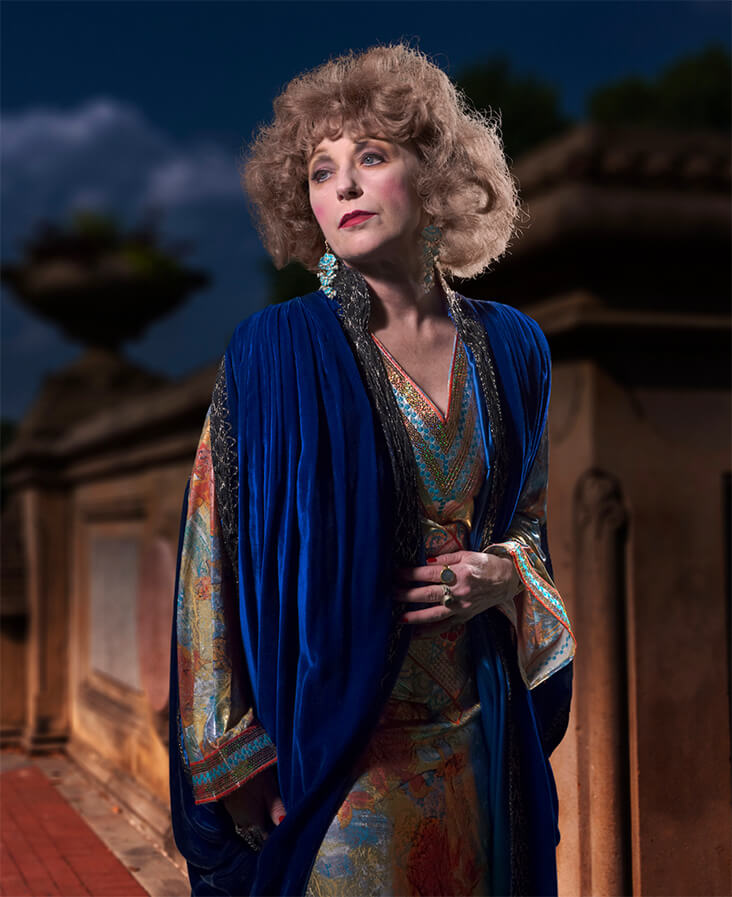










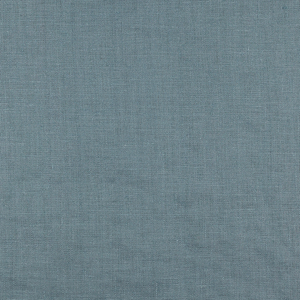








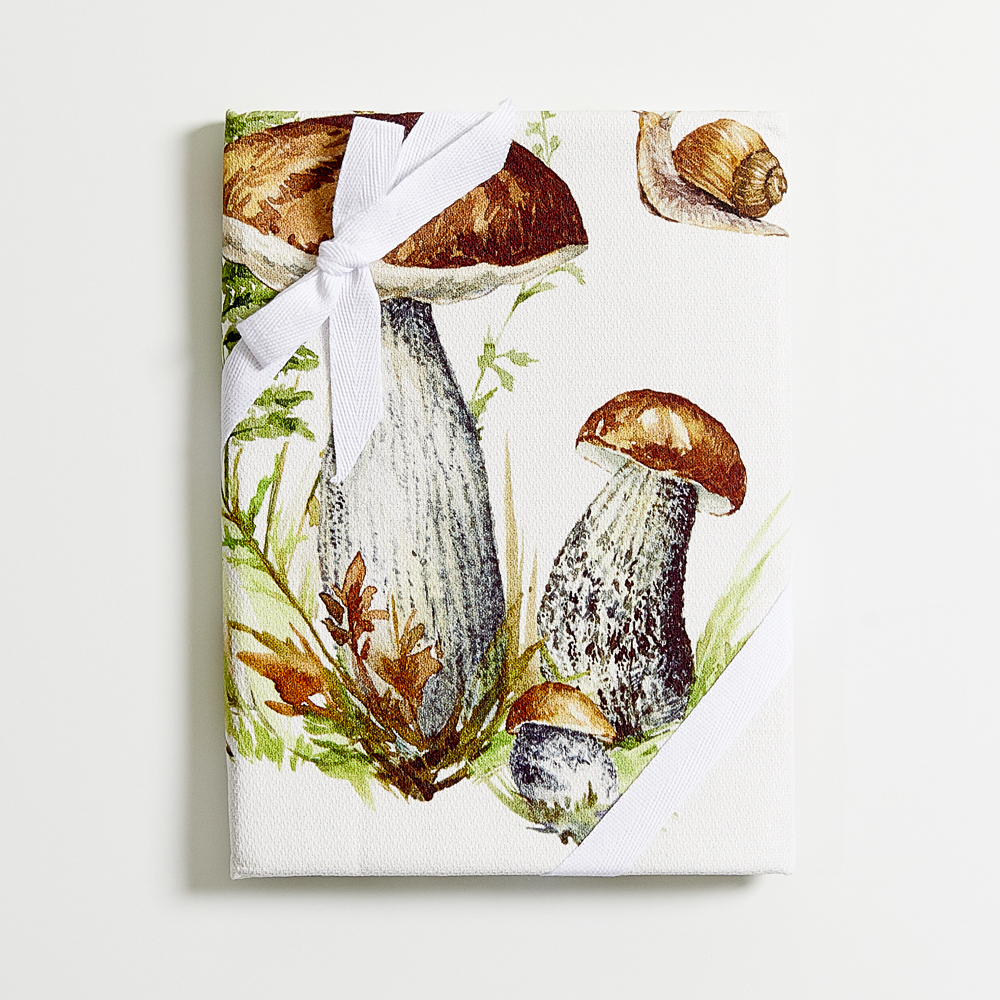





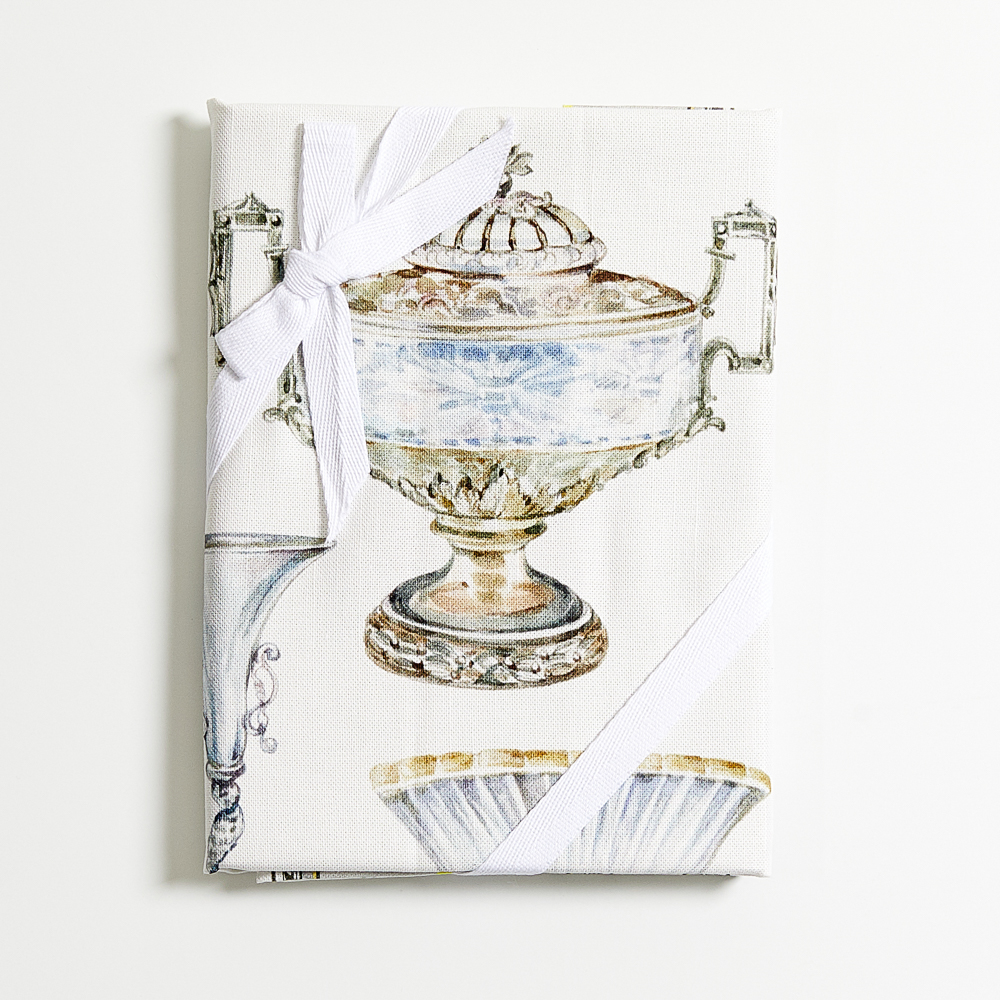






2 Comments
Nancy Stockman
just saw her mentioned in Netflix’s Inventing Anna…interesting
Rosie Lesso
Thanks Nancy! I only recently discovered this show and it was very interesting to see Sherman’s photograph pop up. I thought they described the meaning behind her art really well…